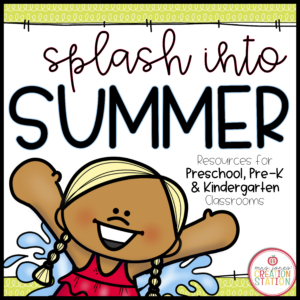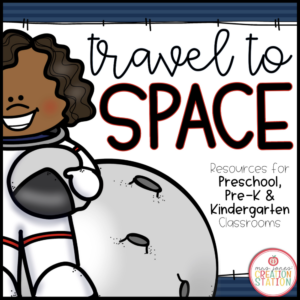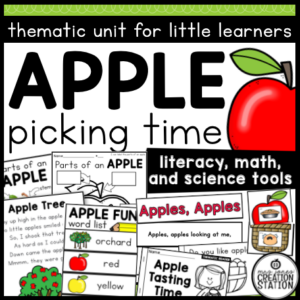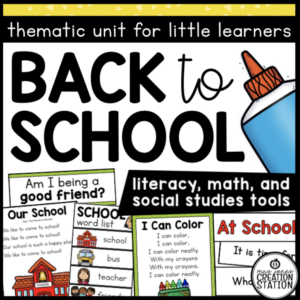Menu
This resource includes Halloween thematic lessons, activities, poems, songs, and centers for your little learners.
Buy the BUNDLE and SAVE! You can purchase this resources in the Thematic Activities for Little Learners Bundle and the Little Learners Mega-Bundle!
Week 10 Plans
This is a template for lesson plans during Halloween week of school. Pick and choose what ideas and resources work for your learners.
Halloween – Whole Group
These resources can be used during whole group instruction for a Halloween theme. They include a poem, word cards, tracing page and table sign in sheets.
Halloween Interactive Poem
First, use this poem during a thematic lesson, whole group or a literacy center and have learners change the costumes they can wear.
Halloween Thematic Plans
Use these plans as a guide for engaging Halloween read alouds and activities in the classroom.
Science – Slime Potion
Read Witches and follow the directions to create a Slime Potion.
Technology – Jack-O-Lantern
Read Pumpkins, Pumpkins Everywhere and have learners create a jack-o-lantern on the computer.
Engineering – Haunted House
Read At the Old Haunted House and have learners plan and create a house using cardstock and stickers.
Art – Skeleton and Mummy Art
Read Skeleton Meets the Mummy and create art using the skeleton and mummy tracers.
Math – Web Shapes
Read Walter’s Wonderful Web and create a web using glue and glitter.
Halloween Sensory Charts
Explore Halloween with the five senses. Complete the charts together and have learners draw and write about Halloween using their senses on the interactive page.
Halloween Predictable Chart Class Book
Use this resource to create a class book from the predictable chart created during the week.
Literacy Center | Alphabet Match Up
Have learners choose a card and trace the matching lowercase letter on the printable.
Literacy Center | Rhyming Puzzles
Have learners match the cards that rhyme.
Literacy Center | Syllable Clip Cards
Have learners clip the number of syllables in each picture.
Math Center | Candy Sort
Have learners sort the candy by its size.
Math Center | Counting
Have learners clip the number of bats they count on each card..
Math Center | Number Mats
Have learners trace, make and count the numbers to ten on the number mats.
WEBSITE| FACEBOOK | INSTAGRAM | PINTEREST | TEACHERS PAY TEACHERS
© Mrs. Jones’ Creation Station, Inc
How can I see what is new in the MJCS store?
Be the first to know about new discounts, freebies, and new products. You can also subscribe to our newsletter to receive access to resources only available to MJCS subscribers, as well as, special offers and ideas!
How can I get credit for my TpT purchases?
Go to your account button at the top of the page. Under the “Buy” section, click “My Purchases “. Beside each purchase you’ll see a Provide Feedback button. Simply click the button and you will be taken to a page where you can give a quick rating and leave a comment for the product. Each time you give feedback, TpT gives you feedback credits that you use to lower the cost of your future purchases. Please leave detailed feedback for each resource, so we are able to create better resources for teachers and students.
How can I find a certain activity in a large PDF file?
If the resource you purchase has a variety of activities compiled into one PDF find the table of contents and click on the activity title. This should take you to that specific activity in the resource.
What can I do if I have a question about a resource?
If you have any questions regarded a resource before purchasing please email me at mrsjonescreationstation[at]gmail.com. Once you have purchased the resource you may use the “Product Q and A” tab on the product page to ask a question, as well.
How do I know if a resource has been updated?
Go to your account button at the top of the page. Under the “Buy” section, click “My Purchases “. Choose to “sort by: recently updated” to see what resources have been updated since you downloaded them last. You can download any updates from there. If a file has been updated, you will see a notification under the resource that says “Newly Updated – Download for Free!”
This item is a paid product created by Mrs. Jones’ Creation Station, Inc. Copying any part of this product, redistributing, selling or placing it on the internet in any form is strictly forbidden and is a violation of the Digital Millennium Copyright Act (DMCA). Thank you for respecting our work!
YES, YOU CAN…
NO, YOU CAN’T…
Click here for a detailed post with step-by-step directions.
You will need to download fonts specified in the resource and install it on your computer before downloading the editable file.
Install the most recent version of Adobe Reader onto your computer. If you have any problems editing, viewing or printing a file make sure your Adobe Reader is updated.
Now you can download the file to your computer. Once the file has downloaded open in Adobe Reader. You should be able to view the editable fields and the text should match the product description. If you have any problems editing the file, make sure you have followed the directions above and then contact me at mrsjonescreationstation[at]gmail.com




